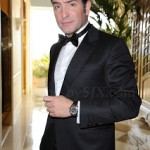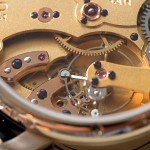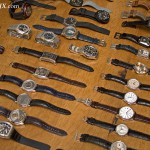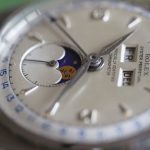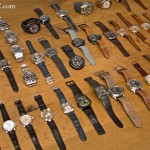Editorial: Thoughts on W&W 2022
The boom years are back.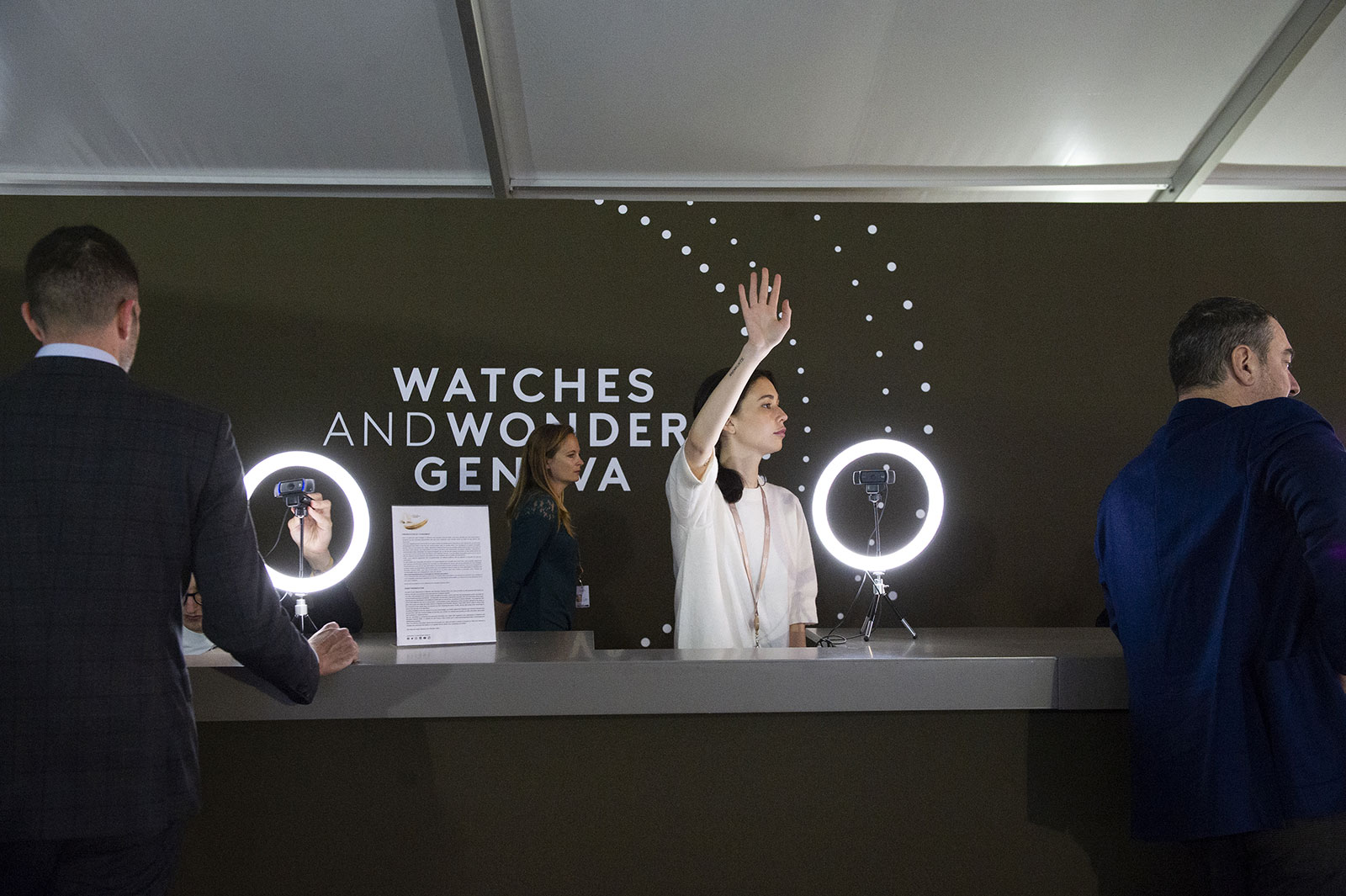
Having just closed its doors, Watches & Wonders 2022 (W&W) was a success. All the industry executives I spoke with were satisfied with the event and predict it will happen again, barring any major disagreements between the important brands and groups that took part.
That is borne out by the numbers as well. According to its organisers, the event had 22,000 individual visitors. Compare that to 2019 when SIHH had 23,000 visitors with about the same number of exhibitors, while Baselworld logged over 80,000 that year but with 20 times the number of exhibitors. All things considered W&W 2022 had a good turnout.
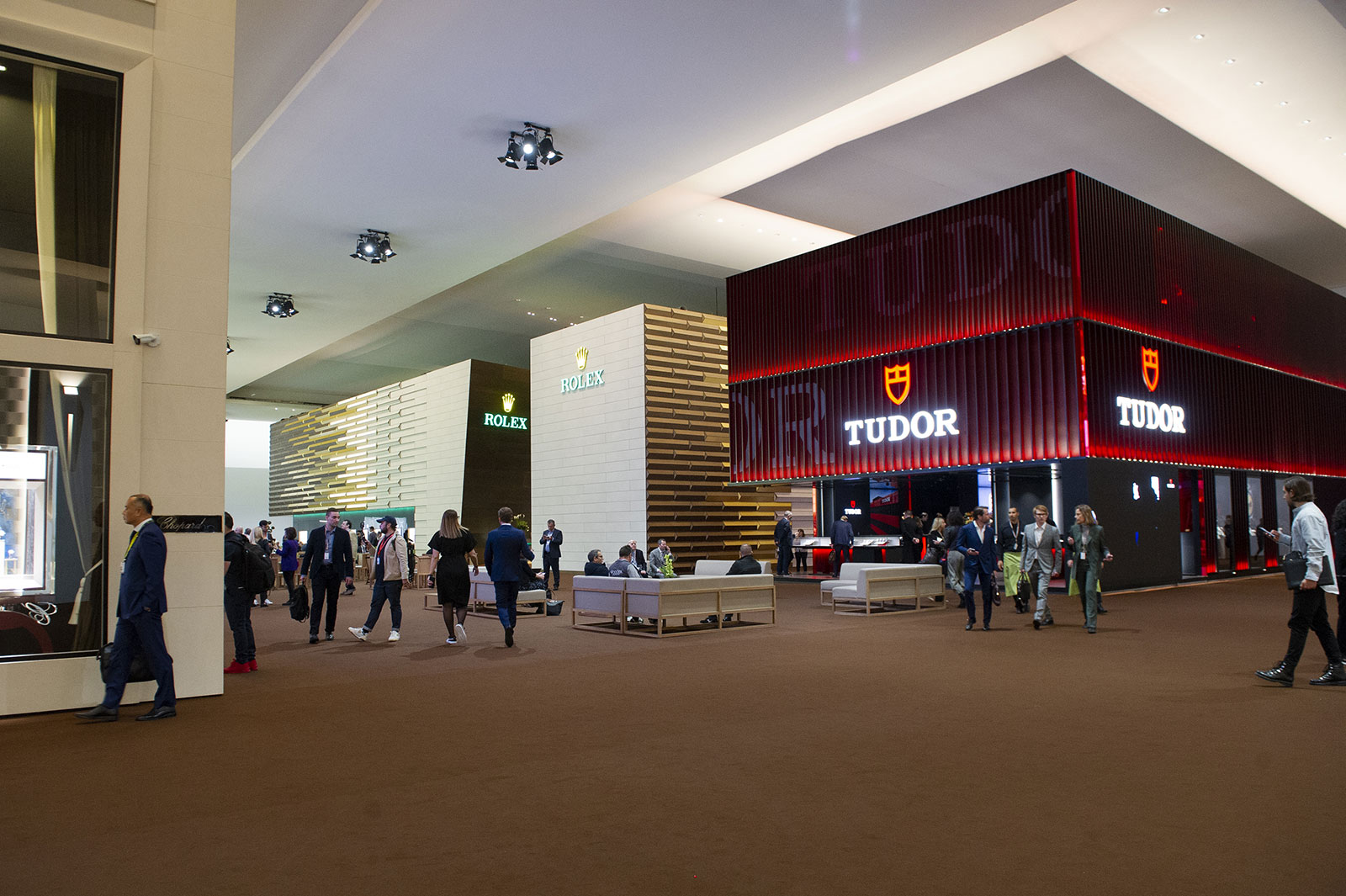
All the exhibiting brands stuck to the standard booth format of the event, except for the independent-minded quartet of Rolex, Tudor, Chopard, and Patek Philippe, which reused their Baselworld booths
While turnout was good, business was great. The luxury watch industry is enjoying a boom without parallel – “sold out” and “waiting list” were certainly the defining phrases of the fair.
I asked Gisbert Brunner, the veteran watch journalist who started his career before the Quartz Crisis, if he could recall a comparable period in history and he could not, though he said today does evoke the go-go years of the late 1990s.

The slightly more drab section of the fair made up of almost identical booths
Demand is so strong that assorted brands are being revived and new brands are entering the market. Even Cartier launched the highly complex and ingenious Masse Mysterieuse that was put in ice several years ago when the brand decided to pivot away from complications, though it was one of the rare highly exotic new launches from an establishment name.
Despite the remarkable demand, most establishment brands were prudent in their new launches. The fair did include its share of mega complications, but not too many of them. It could be because new products are planned years in advance and the last two years weren’t the best, or perhaps brands are saving their ammunition for a downturn.
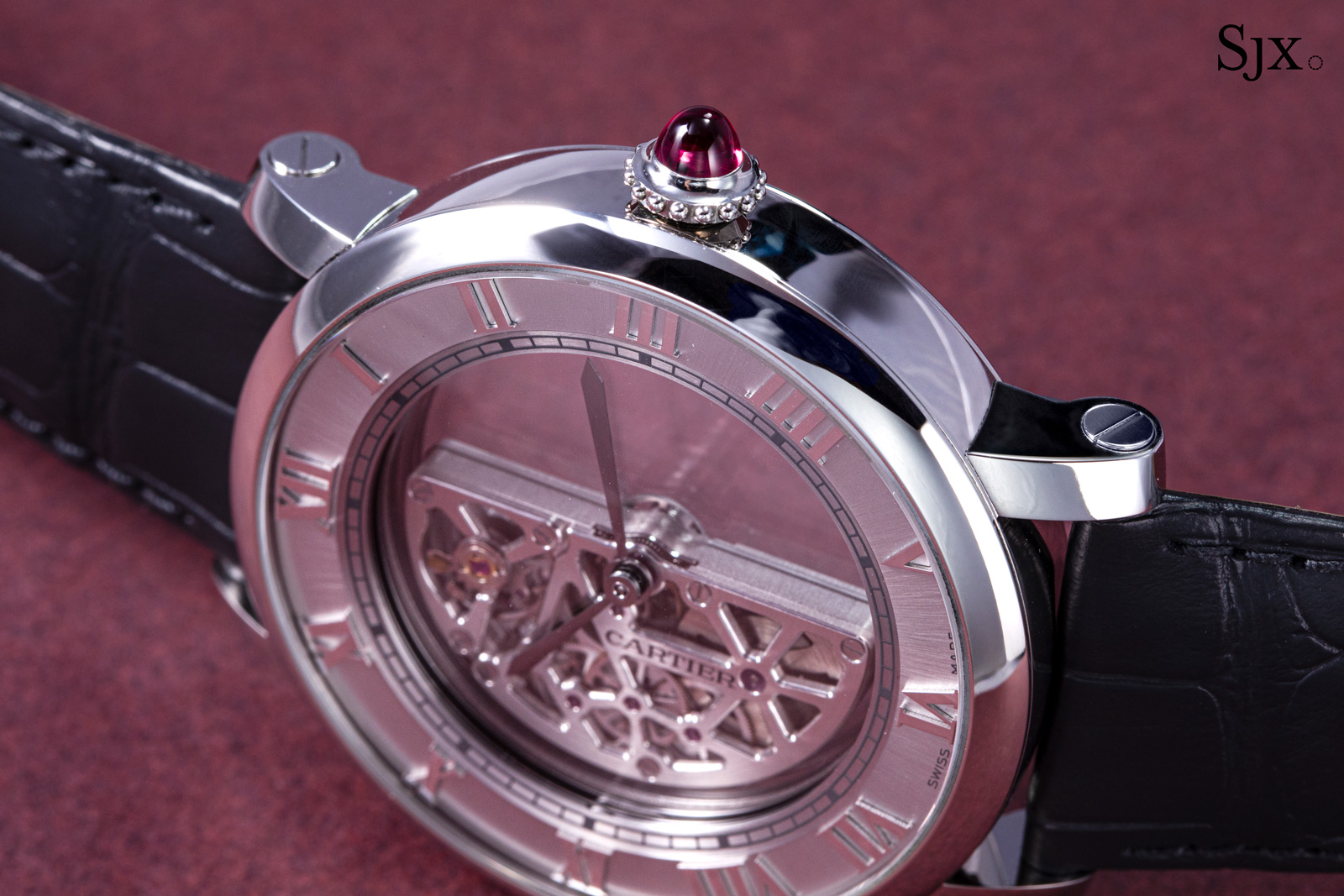
The Masse Mysterieuse
Complications
One of the biggest surprises amongst the complications was the Cartier Masse Mysterieuse, perhaps the most intriguing watch of the fair. An entire movement contained within an automatic-winding rotor, the Masse Mysterieuse was eight years in the making according to Cartier.
But the identity of its inventor was not disclosed, although it is clear that it was Carole Forestier-Kasapi, who was the head of watch movement development until the jeweller decided to abandon high complications. According to well-placed sources, the Masse Mysterieuse was the last complete movement developed by Ms Forestier-Kasapi, so it will be worth watching to see how Cartier tops this, if it does at all.
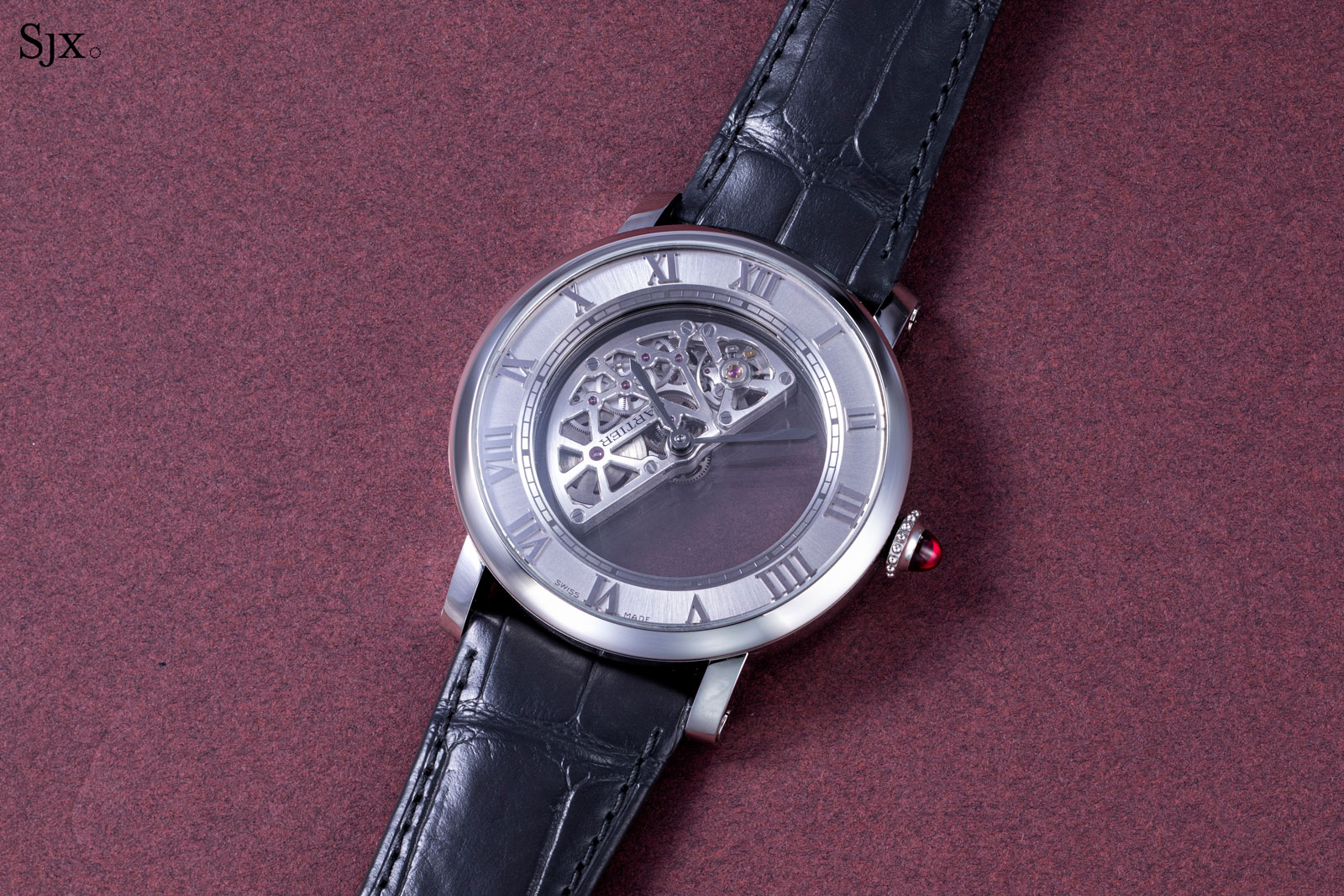
Ms Forestier-Kasapi’s curtain call
Amongst the major complications, two striking watches stood out: the A. Lange & Söhne Richard Lange Minute Repeater and Chopard L.U.C Full Strike Sapphire.
They are opposites of each other – the Richard Lange is slim and classical while the Full Strike Sapphire is over the top as far as Chopard goes – but both are very good at what they do.
The Lange is the brand’s best repeater to date, with loud and clear chimes. And it is surprisingly thin for a complicated Lange watch at under 10 mm high, so it sits flat and elegant on the wrist. Given Lange’s predilection for large and thick complicated watches, the Richard Lange repeater is atypical and appealing for that reason.
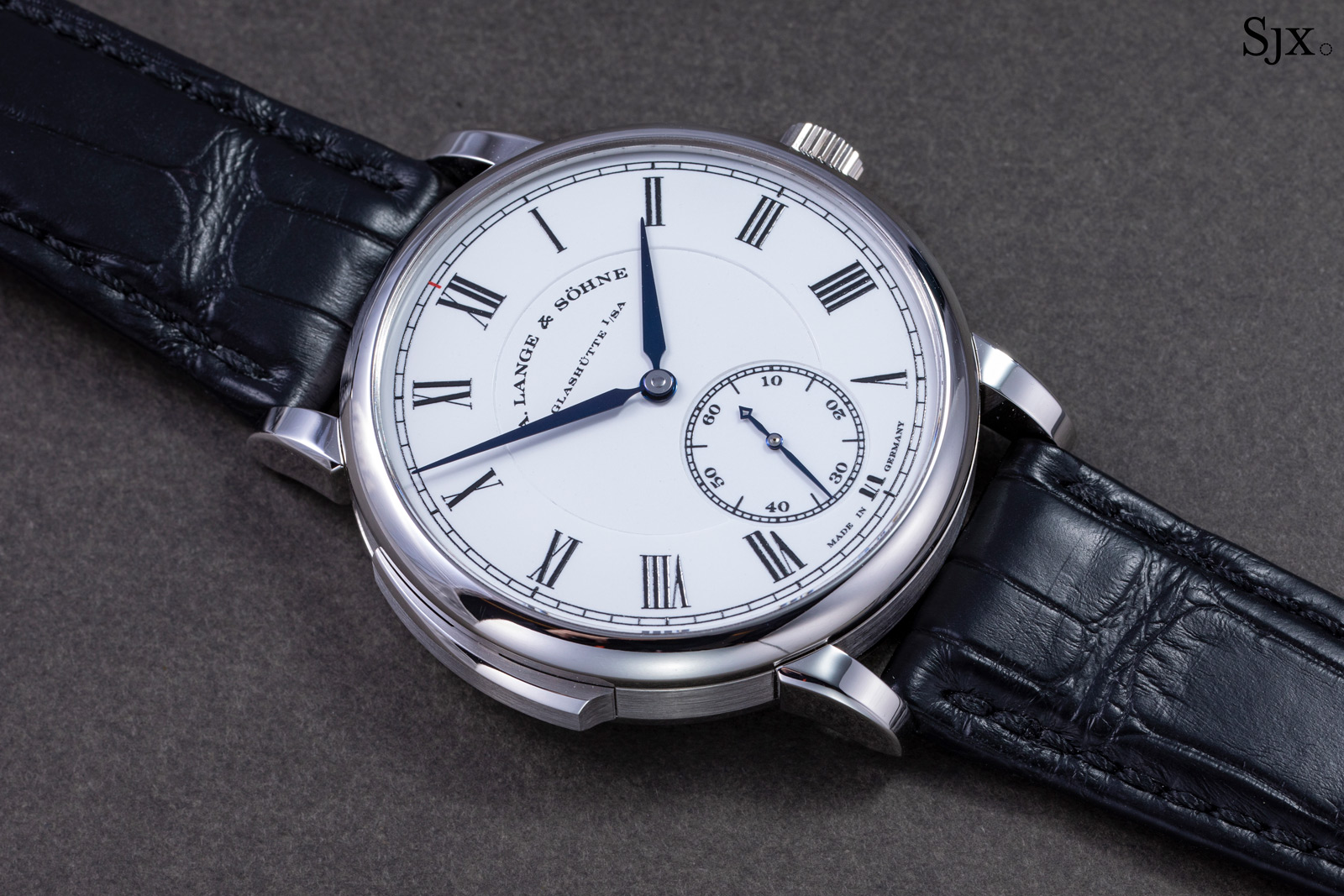
Conservative on the front

And equally traditional on the back
On the other hand, the Chopard is a big watch. It boasts an impressive, glassy sound thanks to its sapphire crystal gongs and case.
The crystalline tone of the chimes is different from conventional repeaters, but it is an appealing sound.
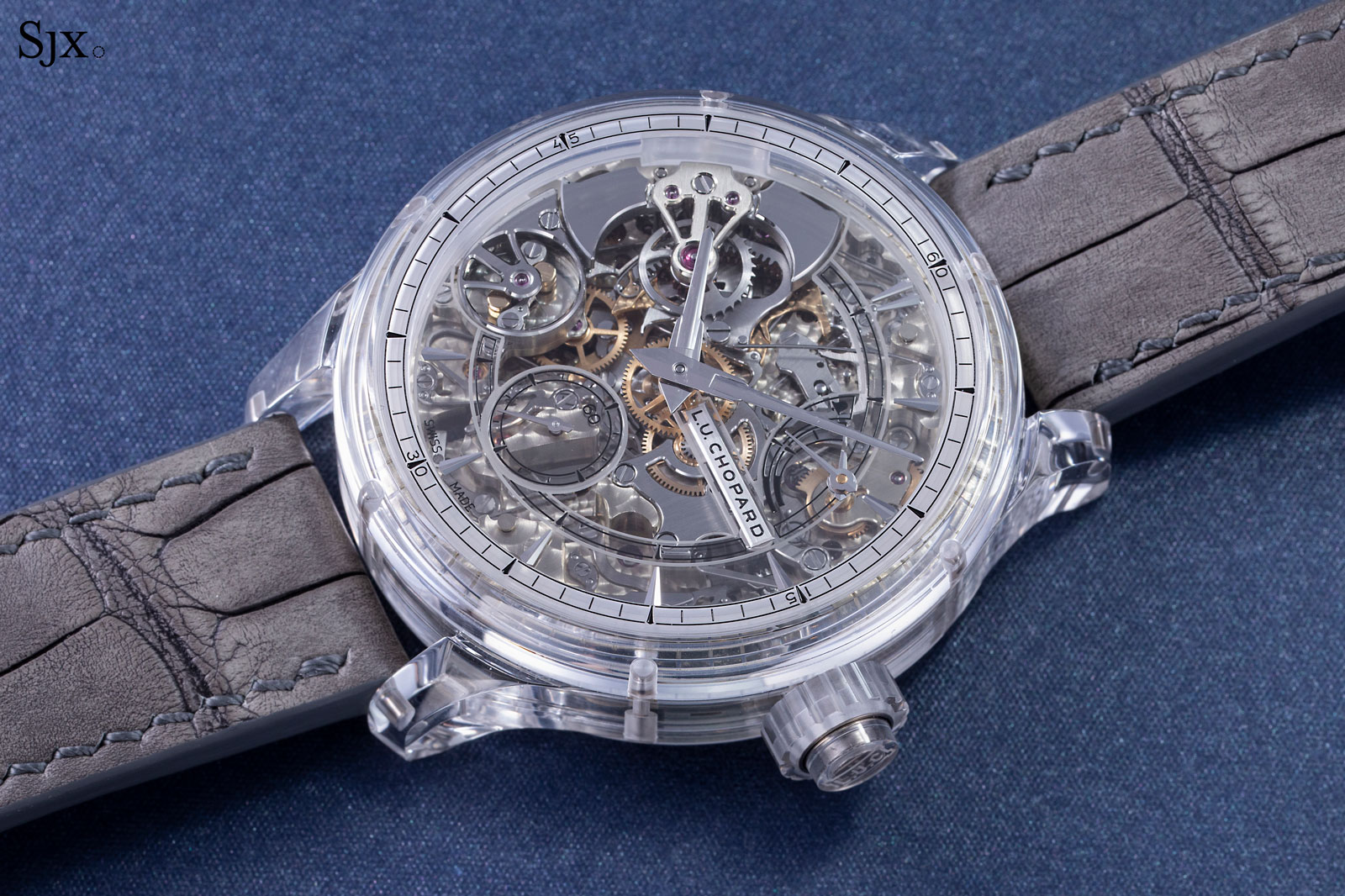
Also notable was the Grand Seiko Kodo Constant-Force Tourbillon, which is the first entirely mechanical haute horlogerie watch developed by Seiko. Its past offerings in this segment were all Spring Drive timepieces produced by the Micro Artist Studio.
With an aggressively mechanical aesthetic, the Kodo is as complex as one would expect from a leading Swiss watchmaker like Jaeger-LeCoultre. Perhaps its only weakness is just that – the Kodo looks and feels nothing like a quintessential Grand Seiko.
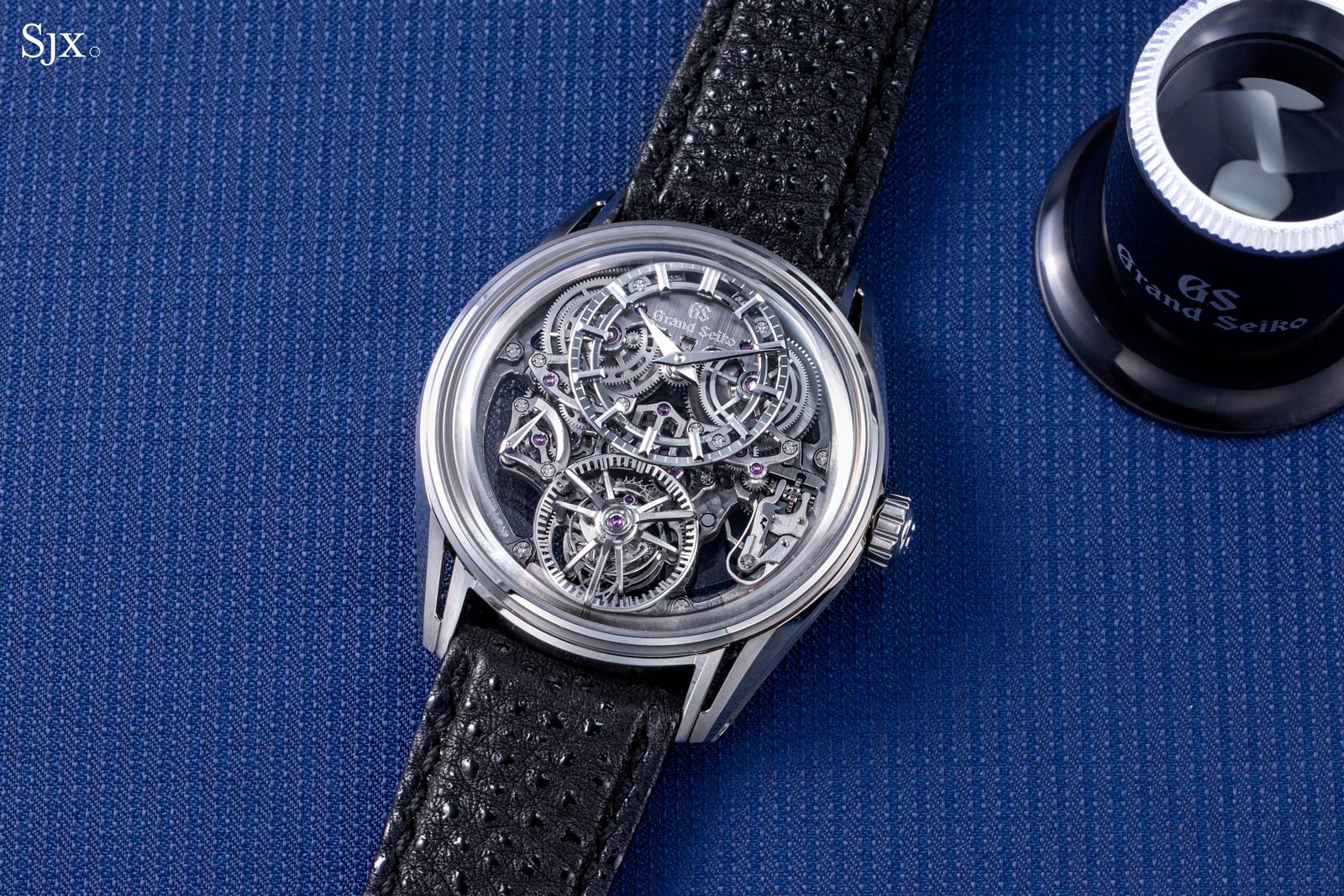
The Kodo
With an equally mechanical appearance is the Freak S, the latest take on the two-decades old movement that is synonymous with Ulysse Nardin. With twin inclined balance wheels linked by a differential – both balances are silicon naturally – the Freak S is truly a more complex and advanced Freak.
That said, the angular, spacecraft-like aesthetic of the case and dial feel excessive since the movement already offers a lot of visual detail.
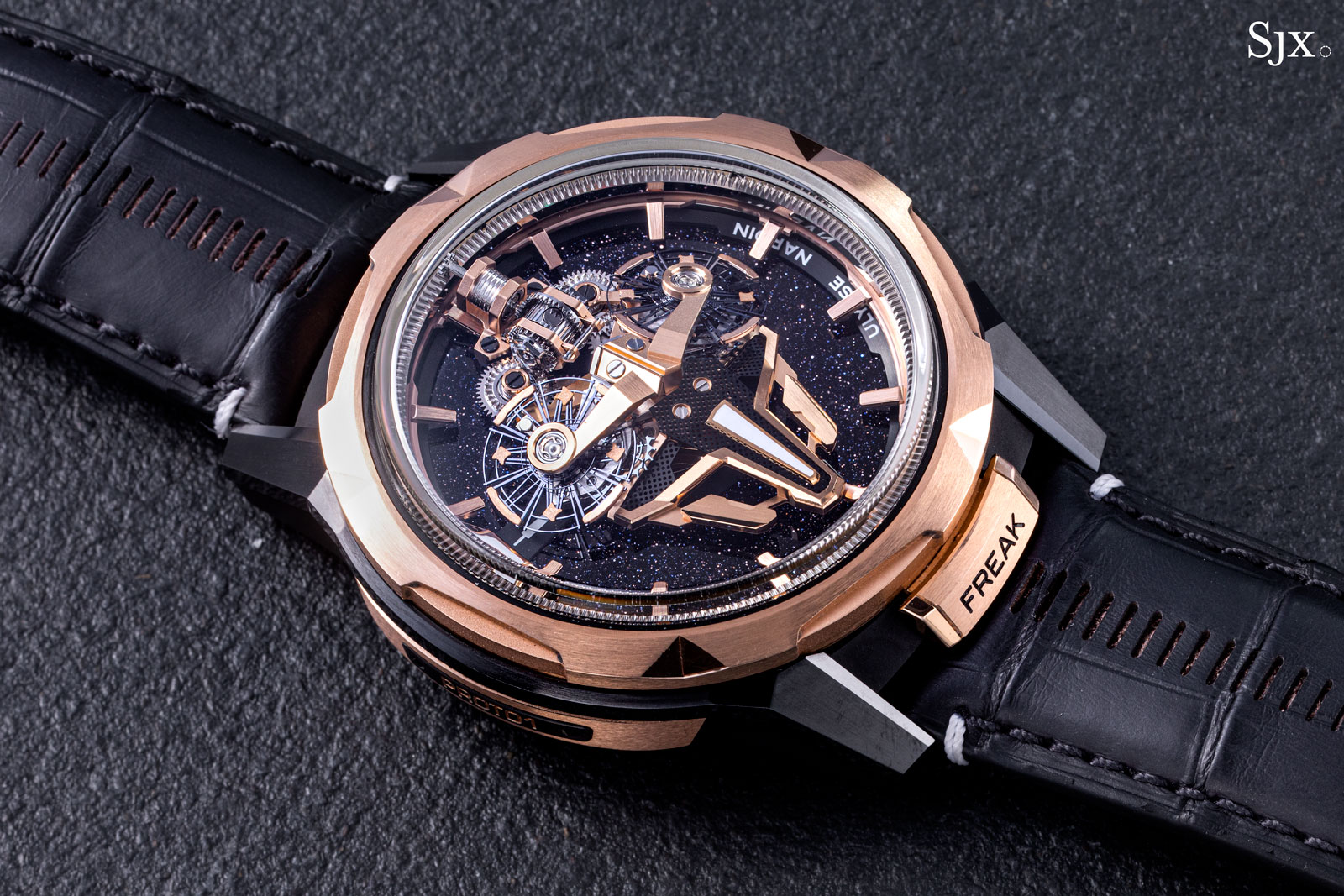
At the opposite end of the design spectrum is the Vacheron Constantin Overseas Tourbillon Skeleton. It is a typical Overseas but stands apart for two characteristics. One is the titanium case (though it’s also available in gold), which is a first for the Overseas.
Another is the movement that was developed to optimise skeletonisation, resulting in beautiful open working and a high level of decoration. And relative to the competition, the Overseas Tourbillon Skeleton is also well priced at a bit under US$150,000 in titanium.
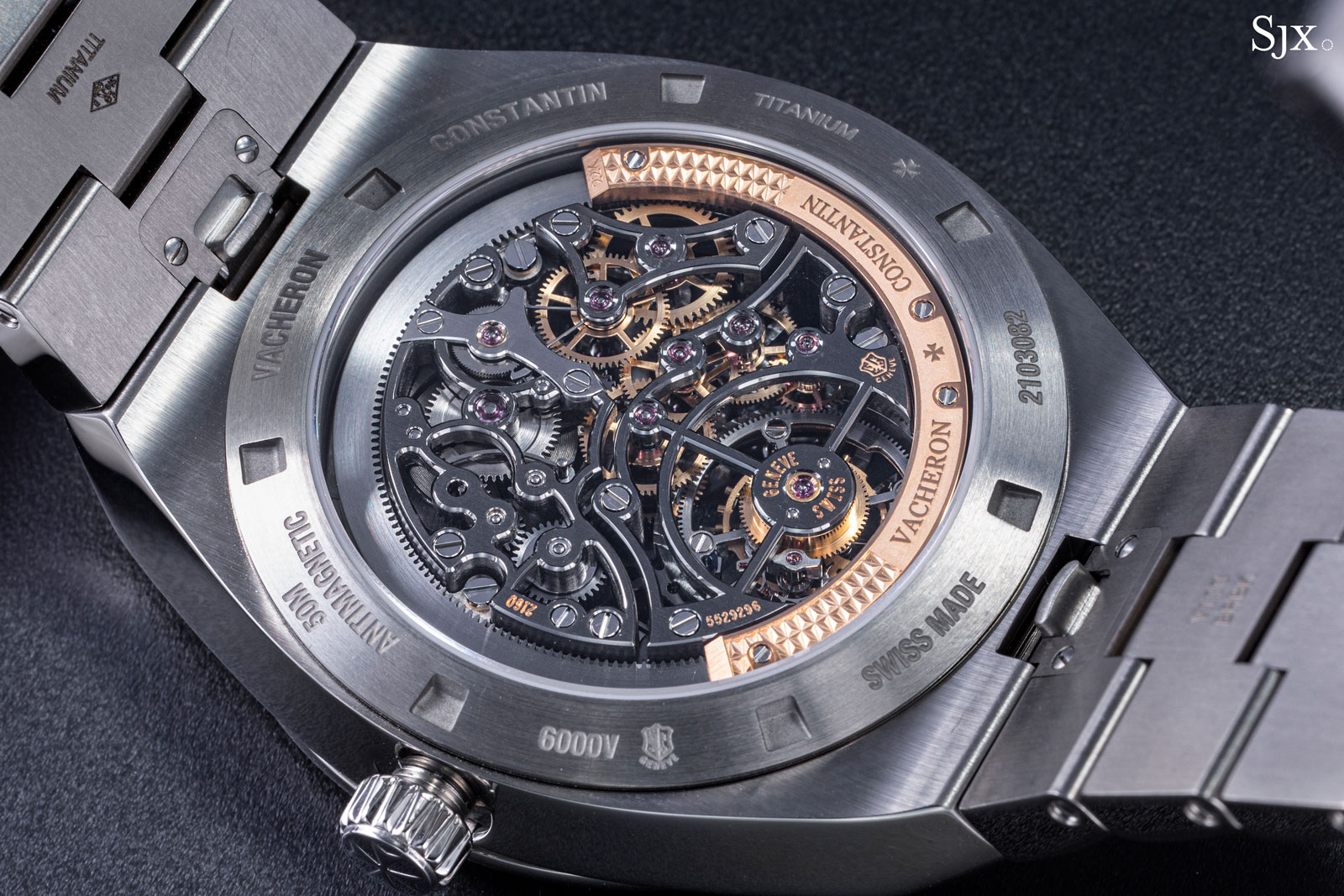
The cal. 2160 in the Overseas Tourbillon
Also a sports tourbillon like the Overseas but more about technology than mechanics is the TAG Heuer Carrera Plasma that makes liberal use of artificial diamonds in a first for a high-end mechanical watch.
The versatility of lab-grown diamonds means the the dial and crown in their entirety are made of diamond, while the case is set with geometric-cut diamonds grown to fit the angles and lines of the case.
The watch reflects TAG Heuer chief executive Frederic Arnault’s interest in technology and industrial processes, which should see TAG Heuer charting an interesting course in the coming years, one that departs entirely from the vintage remakes and simple chronographs that have underpinned the brand in recent times.
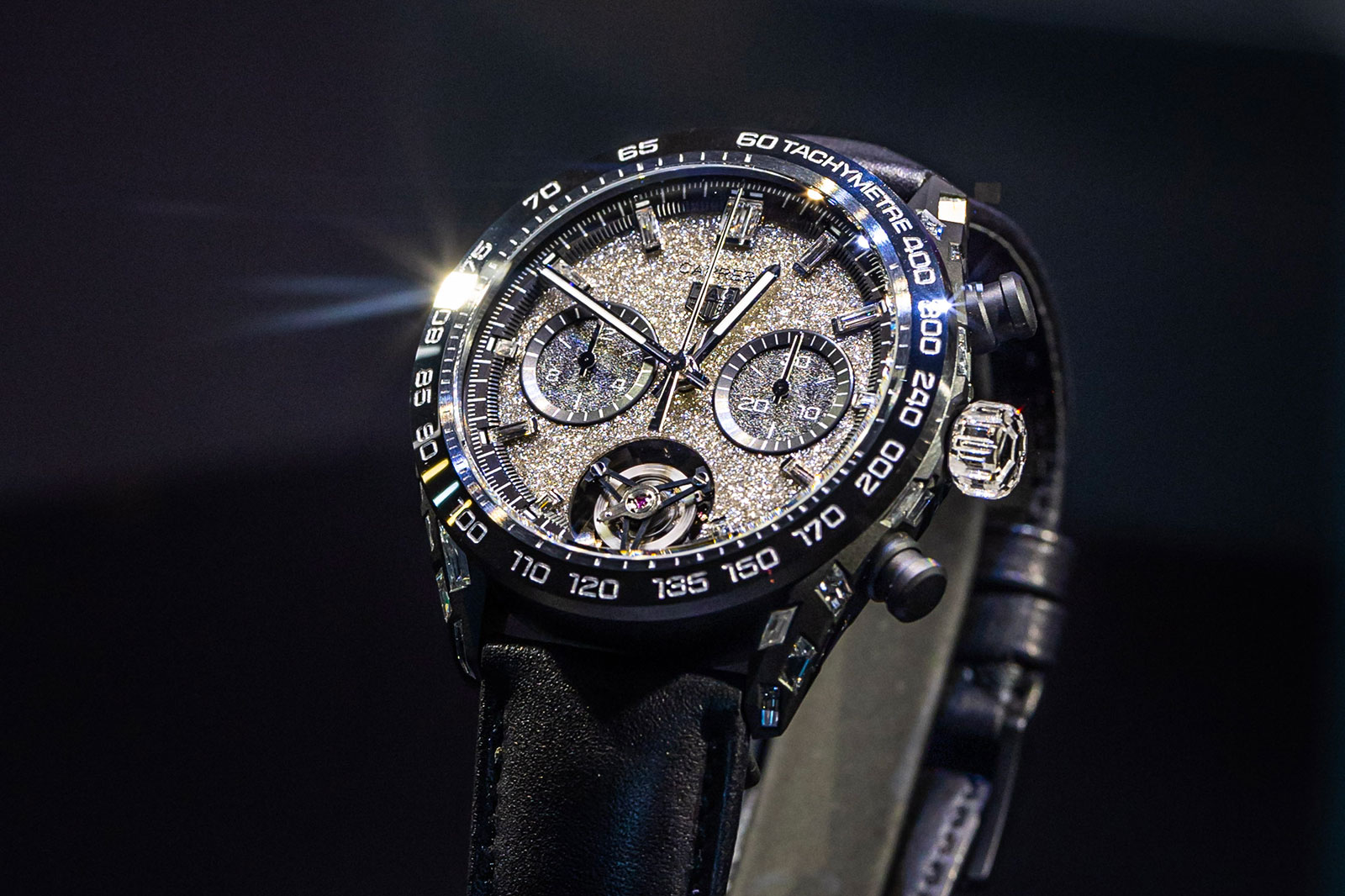
The Carrera Plasma. Image – TAG Heuer
And worth a mention is the trio of mechanical objects from Van Cleef & Arpels that are neither watches nor clocks, strictly speaking.
After having paused its high horology efforts for a few years – the jeweller departed SIHH 2018 and made its return at W&W 2022 – Van Cleef & Arpels presented a trio of incredibly lavish automatons made by Francois Junod, the master engineer in Sainte-Croix who is perhaps the only person in Switzerland able to build such mechanical wonders.
One of the three is the Reveries de Berylline, an automaton with a flower that opens its petals to reveal a hummingbird flapping its wings and rising in the air. This, along with its two compatriots, bring to mind the equally lavish automatons made by the likes of Gerald Genta and Michel Parmigiani in the 1990s.
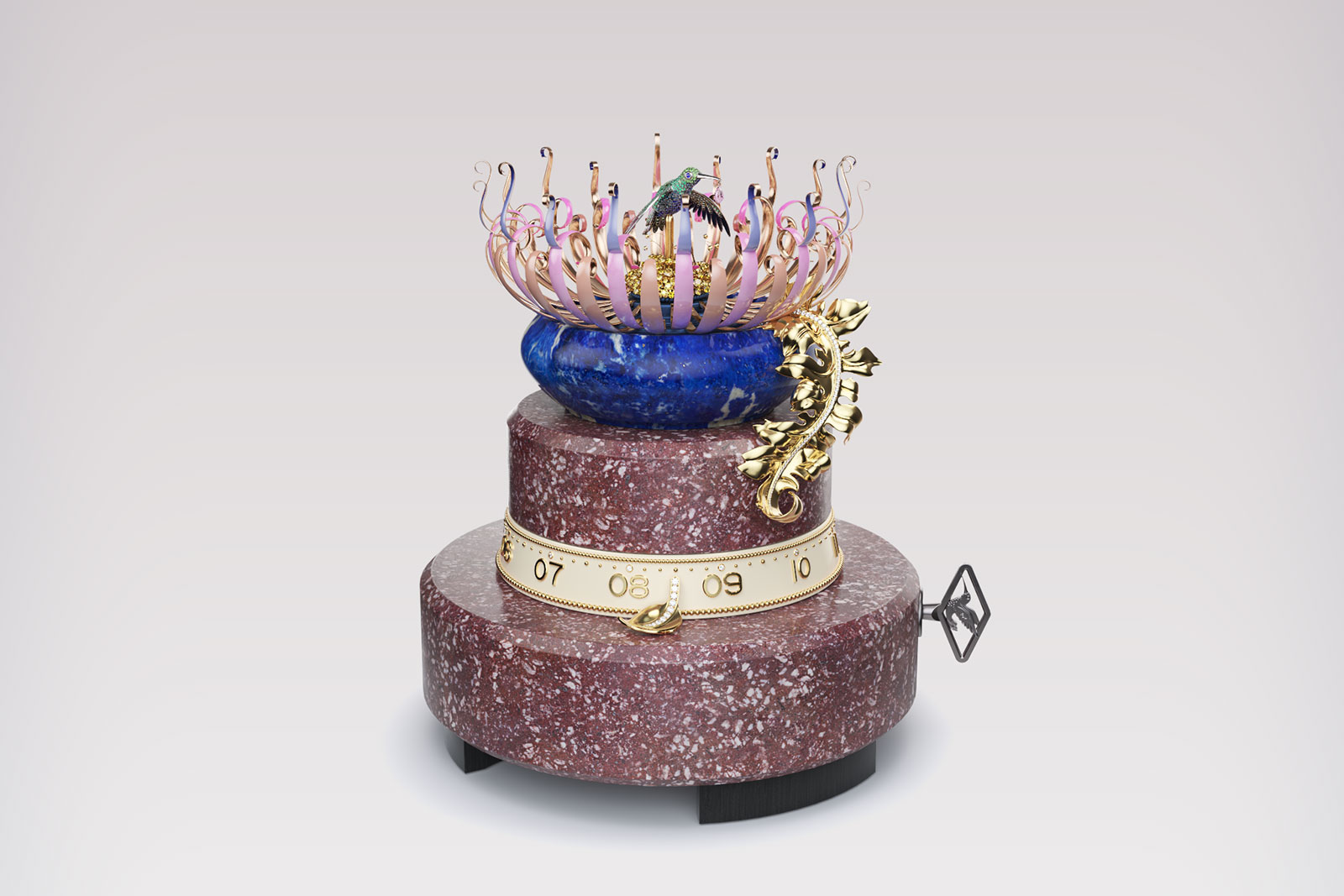
Reveries de Berylline. Image – Van Cleef & Arpels
Design and details
Patek Philippe chose to debut its flagship complication, the ref. 5470P 1/10th of a Second Chronograph the day after W&W ended. At the fair the brand stuck to either variations on a theme or modest complications.
Two watches, however, stood out: the Calatrava Annual Calendar Travel Time ref. 5326G and Calatrava ref. 5226G. The ref. 5326G is powered by a new calibre but it combines existing complications, namely the annual calendar and Travel Time. More notable is the dial and case finish shared by the two models, which illustrate the gradual enhancements Patek Philippe is introducing to its Calatrava models.
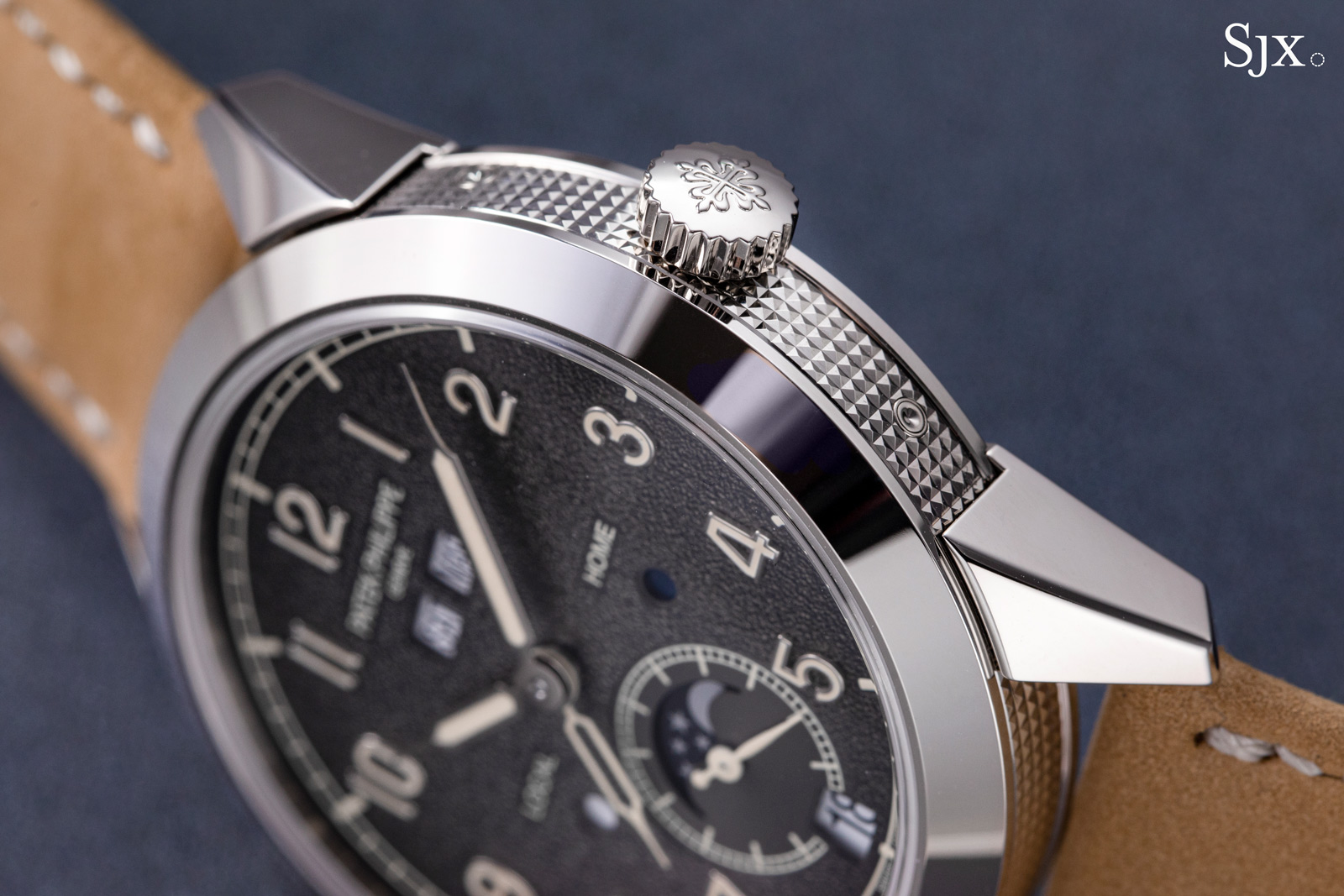
Both watches have an unusual case construction where the lugs are fixed to the case back, resulting in a seamless case middle that allows for uninterrupted Clous de Paris on the case band – a high level of decoration for watches that aren’t Grand Complication category.
And both watches also have the same dial style of a granular, stamped finish with a gradient effect along with applied white gold hour numerals as well as applied plaques for the lettering. It’s an elaborate execution for relatively simple watches.
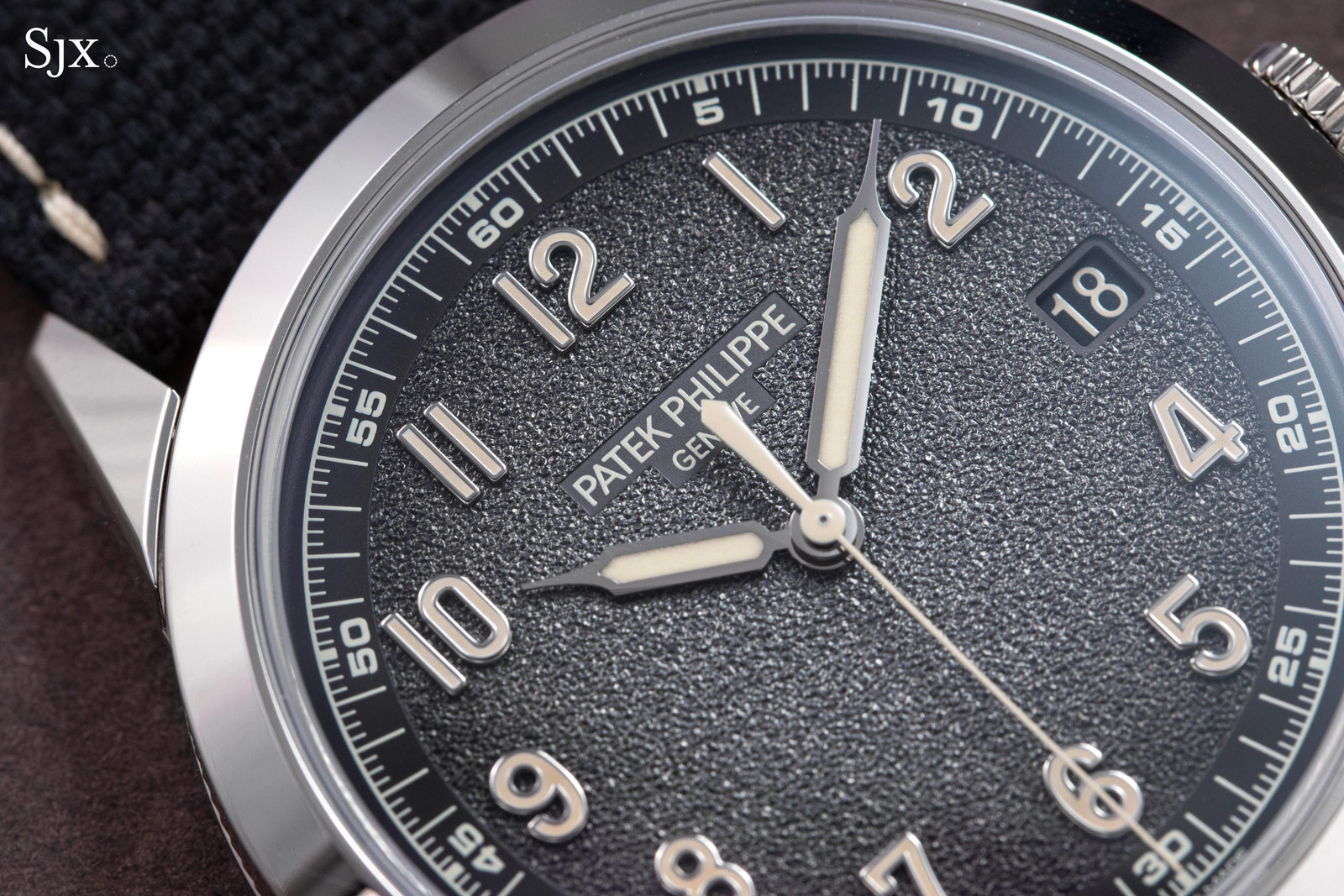
A winner in terms of design was the Cartier Tank Chinoise Skeleton, which captures the exaggerated Oriental style found on Cartier’s Chinoiserie jewellery and timepieces of the Art Deco period.
The styling is just right and deftly avoids crossing the thin line that would have made it kitsch. At the same time, the lacquered bridges and open-worked movement helps it avoid looking plain yet angular as the time-only Tank Chinoise does.
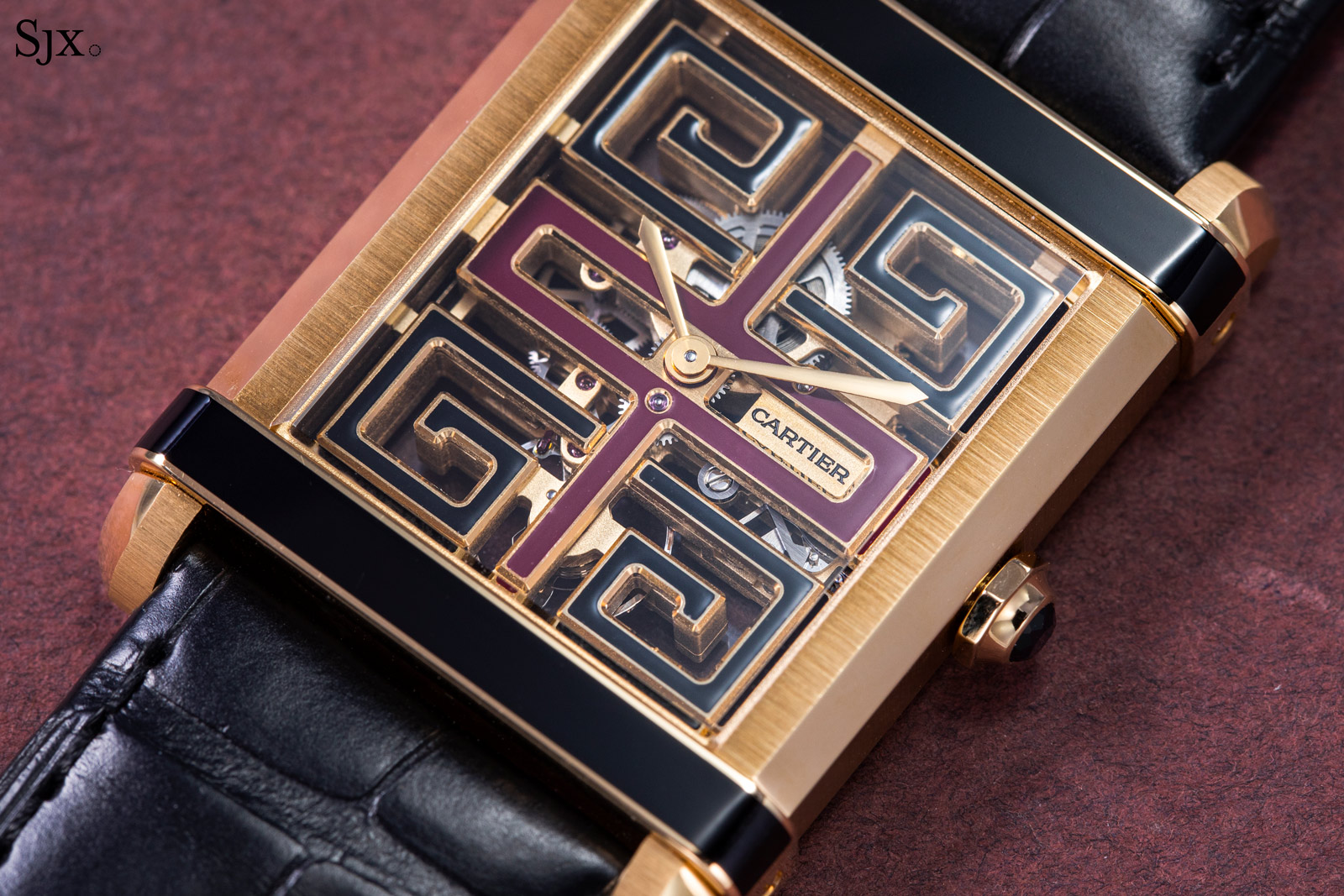
While the Tank Chinoise is flamboyant in a restrained manner, the Crash Tigrée Métamorphoses is a wildly over-the-top creation that’s the first Crash ever to be decorated with enamel (and it’s set with diamonds too for good measure).
Alien in style but still very much a Crash, the Tigrée is slightly larger than the standard Crash in order to accommodate the engraving and enamelling on the case. It was one of the most striking watches of the show.
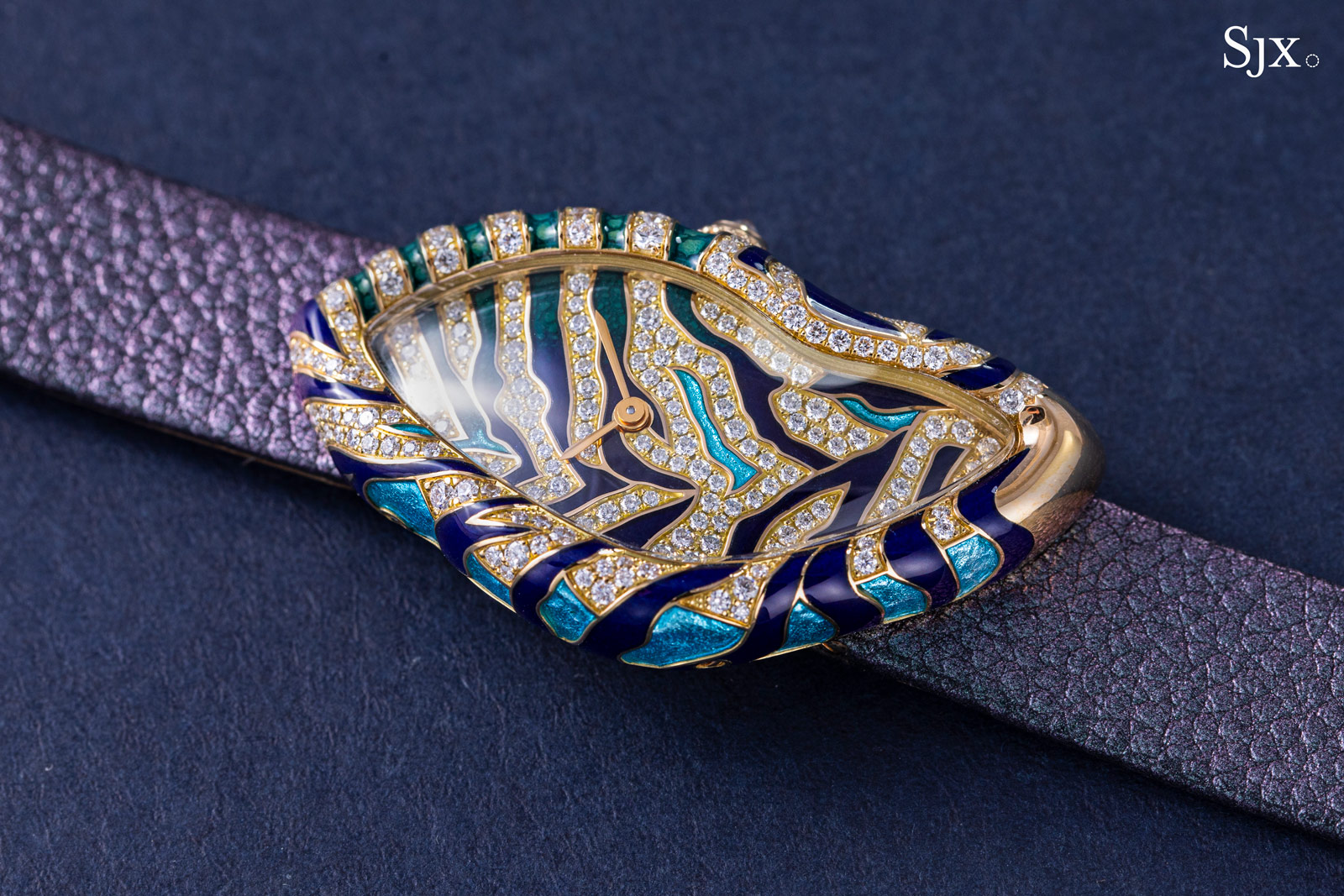
Another design winner but pared back to the maximum is the Ressence Type 8. Now the brand’s entry-level model, the Type 8 looks and feels like a typical Ressence with its sleek and simple design, but does so with minimal mechanics, explaining the more accessible price that’s about a third less than the next most expensive model.
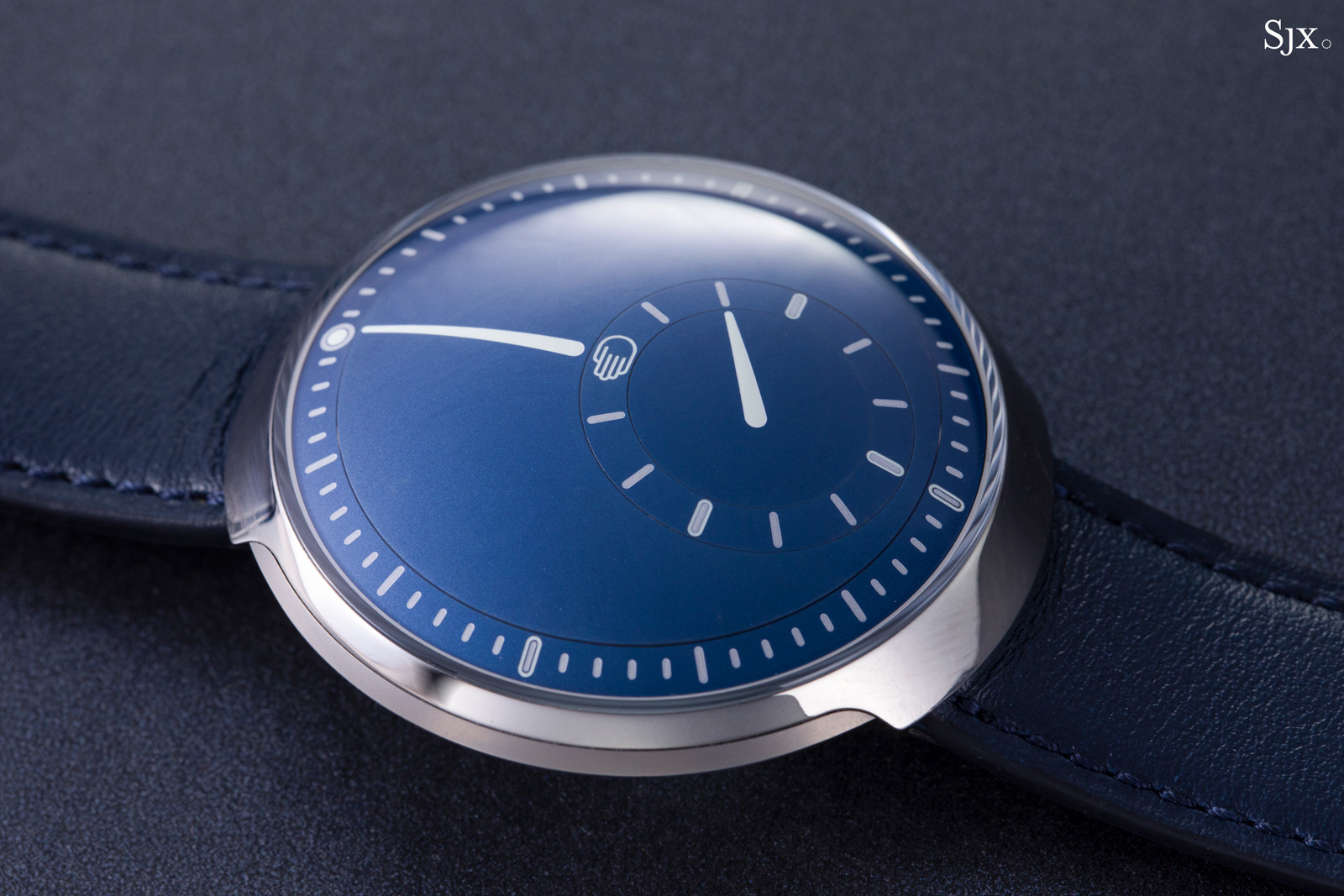
The final design highlight is not a wristwatch at all. Jaeger-LeCoultre didn’t offer much in terms of interesting wristwatches; the complicated watches unveiled during W&W were all variations on past models. But it did present a pair of gorgeous Atmos clocks, the affordable Atmos Infinite and the Atmos Hybris Mechanica that costs €500,000.
The aesthetic of the clocks bring an entirely new style to the decades-old Atmos by combining elements of past models, including those designed by Marc Newson, with the classic mid-20th century Atmos face.
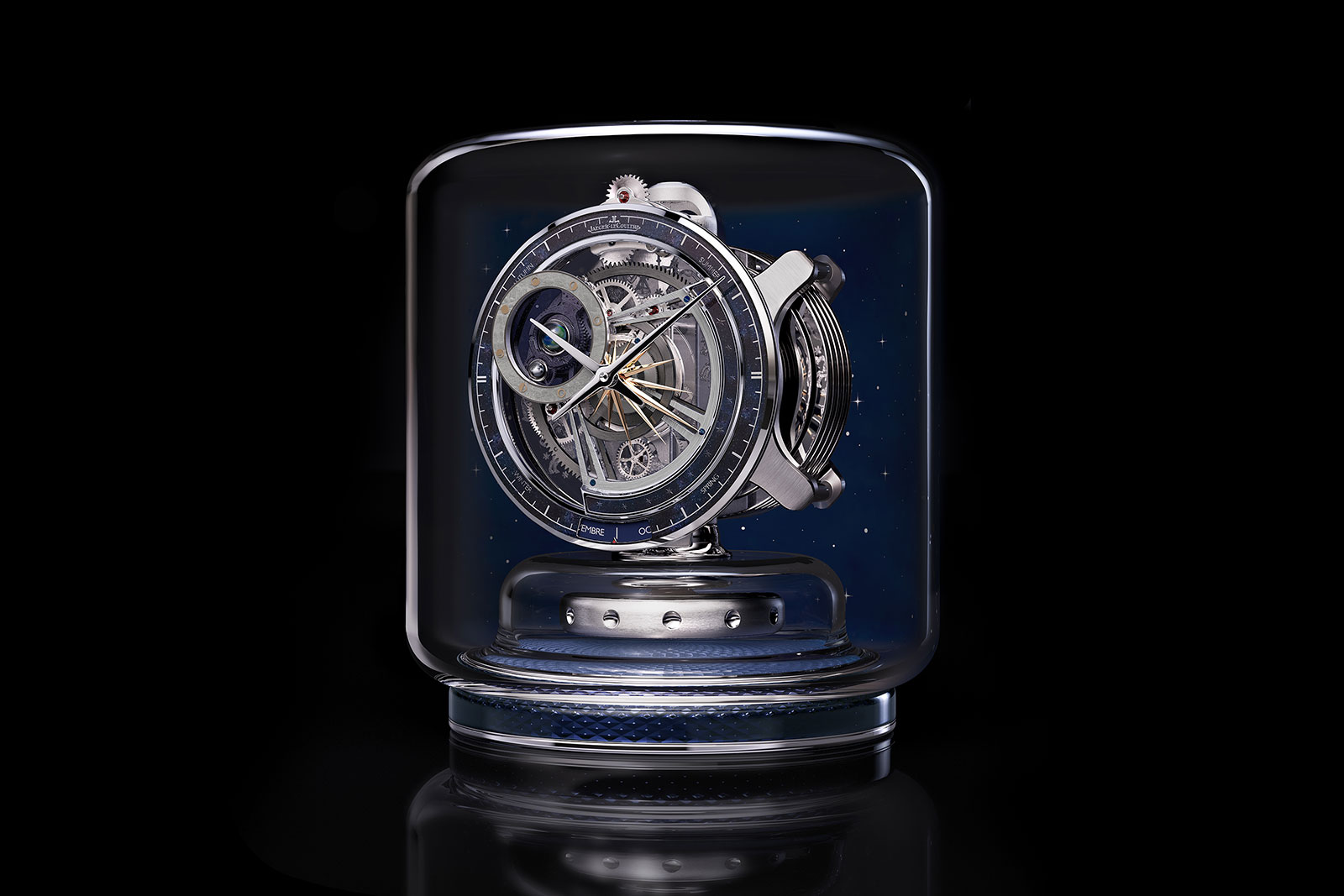
The Atmos Hybris Mechanica Calibre 590
Sports watches
And of course sports watches merit a mention. Arguably the best value proposition of the fair is the Tudor Black Bay Pro, a GMT watch with a fixed bezel that resembles the Rolex Explorer ref. 1655. The visual similarity is no doubt intentional and a good thing in my estimation.
Design aside, the fact that it’s a true GMT watch with an integrated second time zone function, along with all the bells and whistles that Tudor incorporates into its “manufacture” movements, means the Pro is unrivalled value.
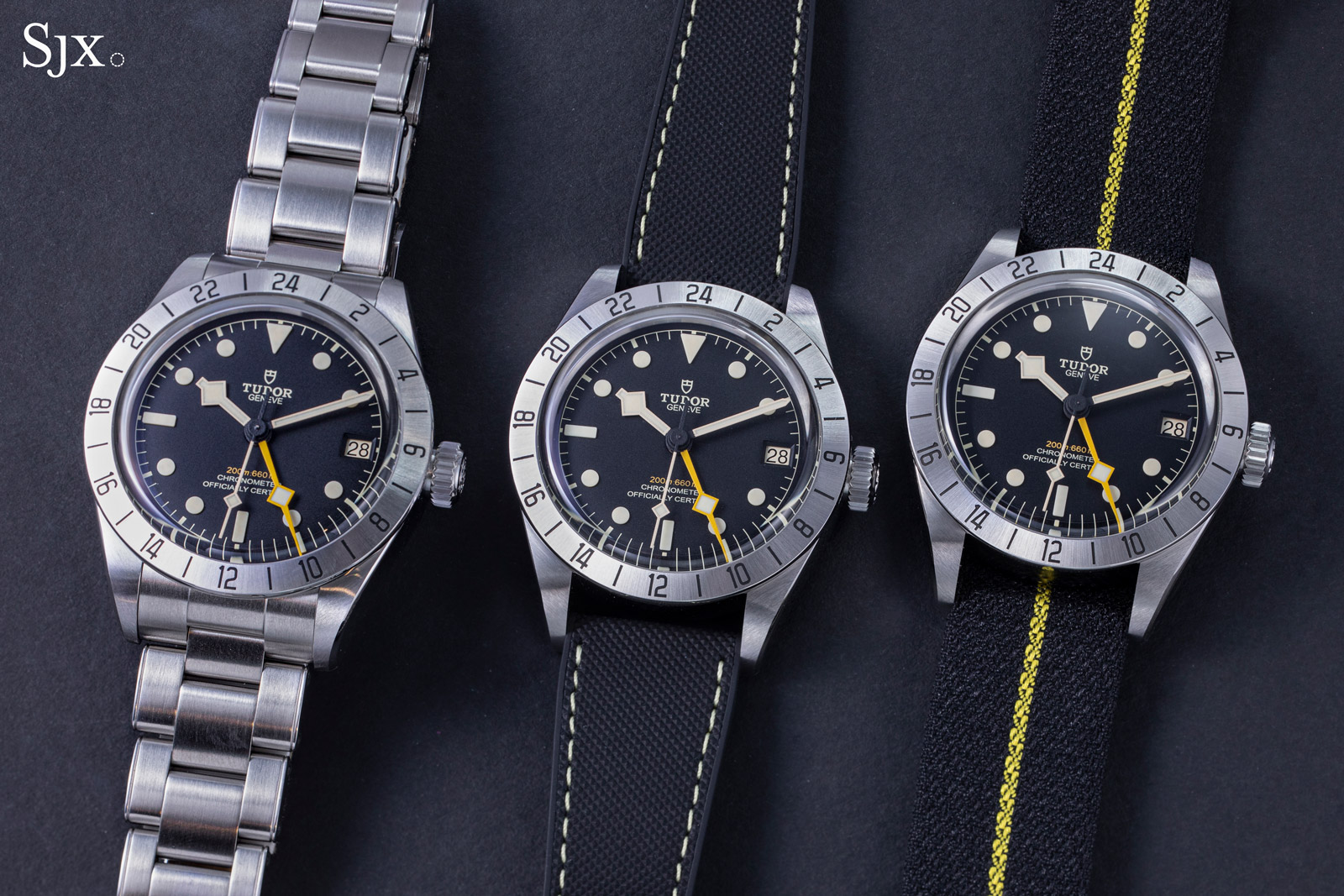
One of the surprises was the Laurent Ferrier Sport Auto, which has an appealing feel in the hand and on the wrist that is absent in photos.
Granted, an integrated bracelet sports watch with a blue dial isn’t ingenious, but the Sport Auto is executed well in both styling and finish. An example of the opposite is the Speake-Marin Ripple, which is just unattractive.
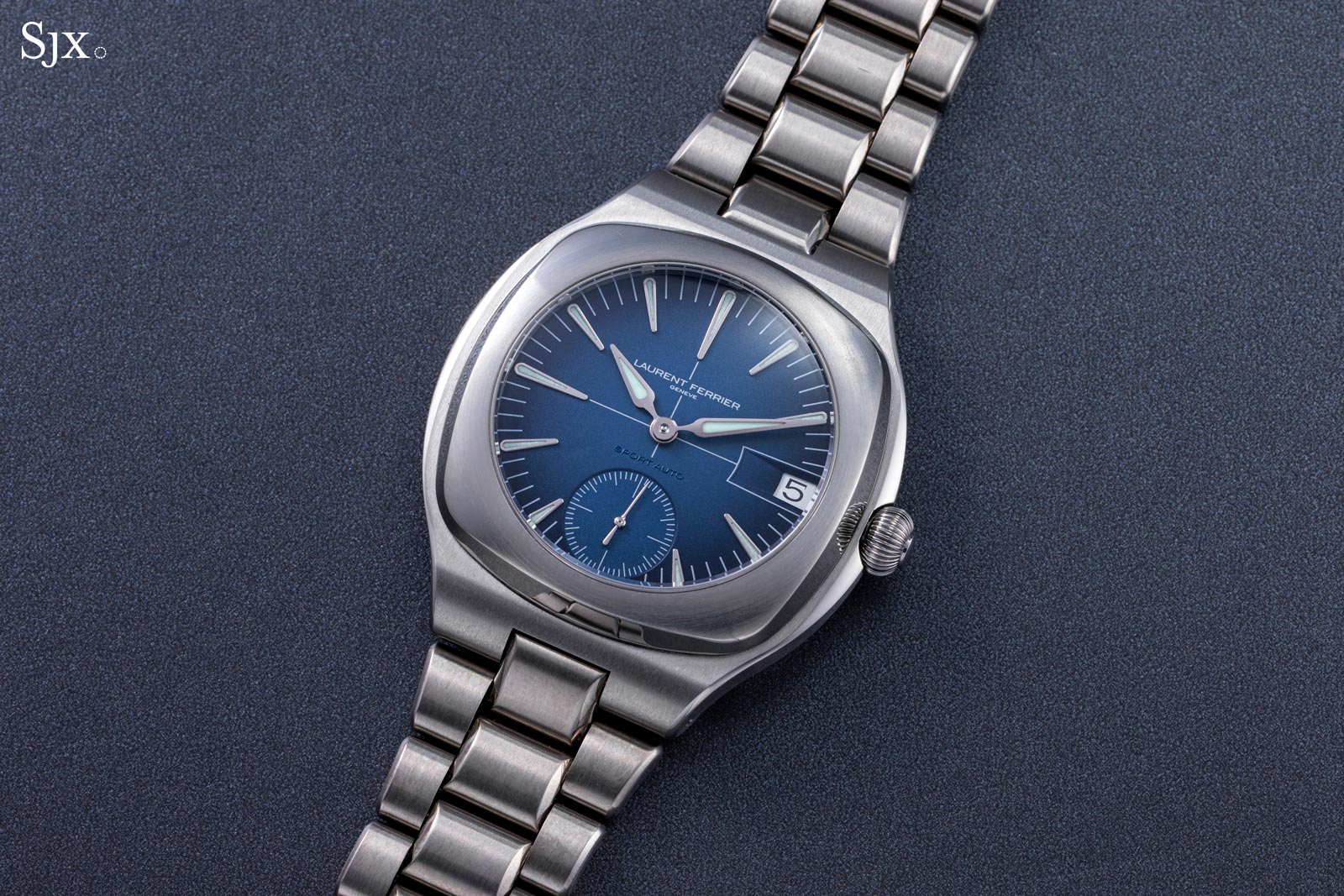
A titanium sports watch with a grey dial isn’t ingenious either, but the new Lange Odysseus is perfectly executed in terms of finish and tactile feel.
Priced at almost twice as much as its steel counterpart, the Odysseus Titanium is more expensive than it should be, despite the additional complexities of working with titanium. But it easily sold out in a flash, reflecting the rabid demand for such watches.
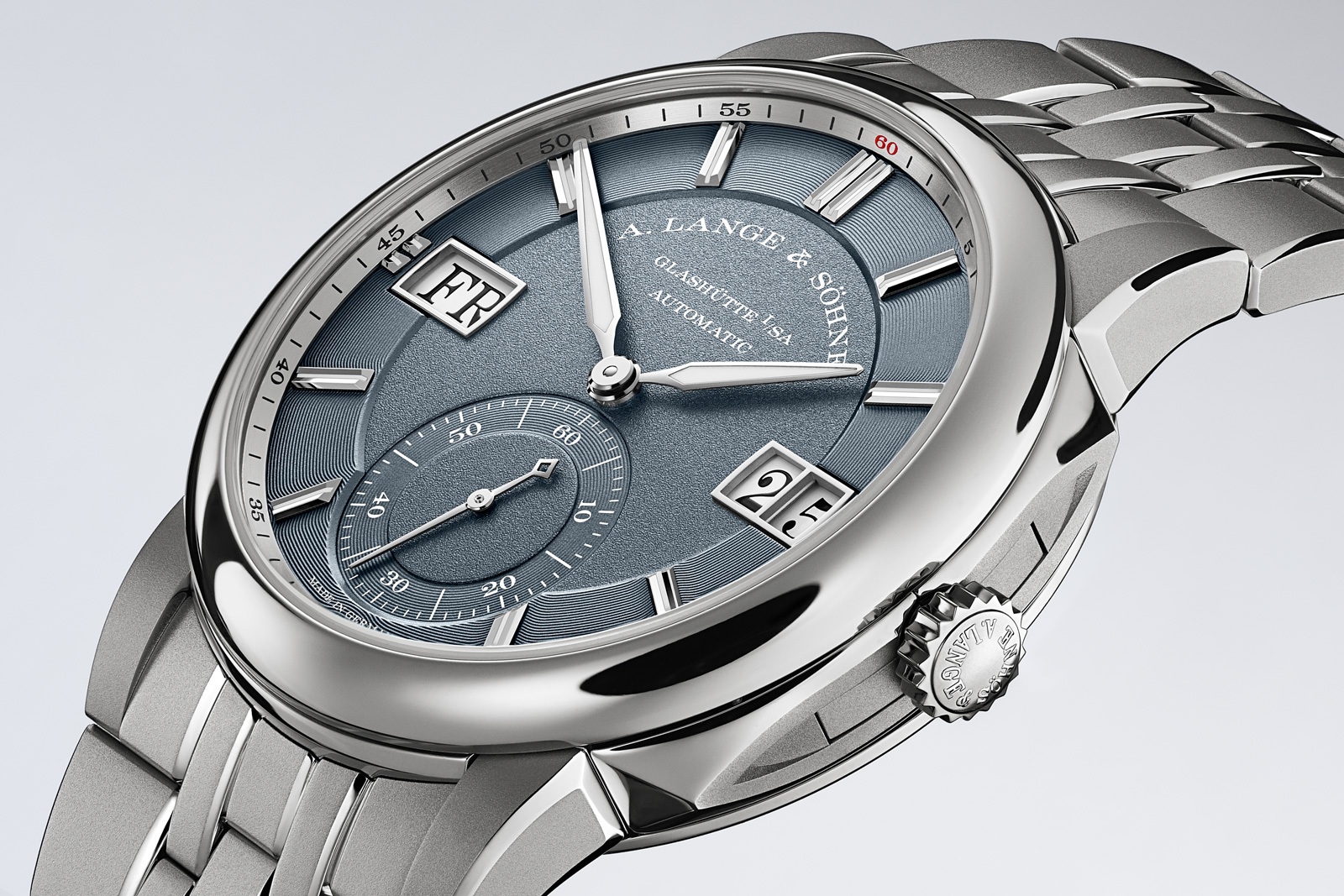
The Odysseus Titanium. Image – Lange
Vacheron Constantin unveiled the Historiques 222, a remake that is almost identical to the original, with just a few tweaks to accommodate the new movement.
The changes are barely discernible, with the most obvious being the repositioned date window that actually looks better on the remake than the original. But the most important upgrade is the bracelet, which is substantially refined over the original, giving the new 222 an ergonomic and sleek fit on the wrist.
Personally I like the new 222 in all respects – design, finish, and price – though I feel it may confuse Vacheron Constantin’s sports watch offerings since the brand also has the Overseas that is very different but still similar.
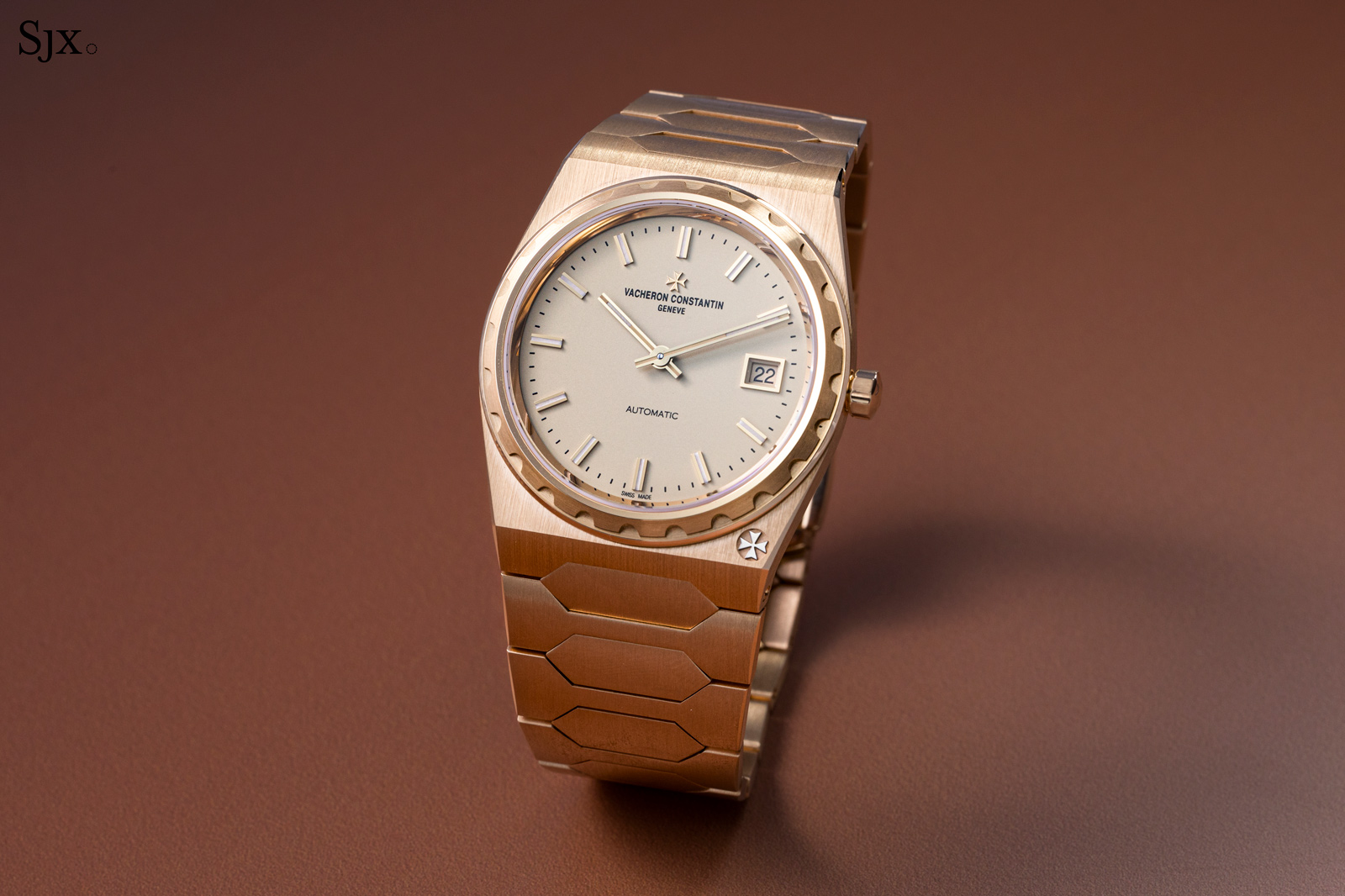
And everyone else
W&W spawned a number of peripheral fairs like the AHCI showing behind the Four Seasons and Time to Watches in HEAD (Geneva University of Art and Design). The AHCI naturally focused on high-end independent watchmaking, while Time to Watches was a mixed bag of brands.
While the AHCI fair included many big names like Kari Voutilainen and Felix Baumgartner of Urwerk, several newer entrants were also showing off their wares. Some are notable for their high level of finishing and construction, including Raul Pages, Marco Lang, Sylvain Pinaud, and Bexei. Another, John-Mikael Flaux, is skilled at automaton clocks and just debuted his first automaton wristwatch.
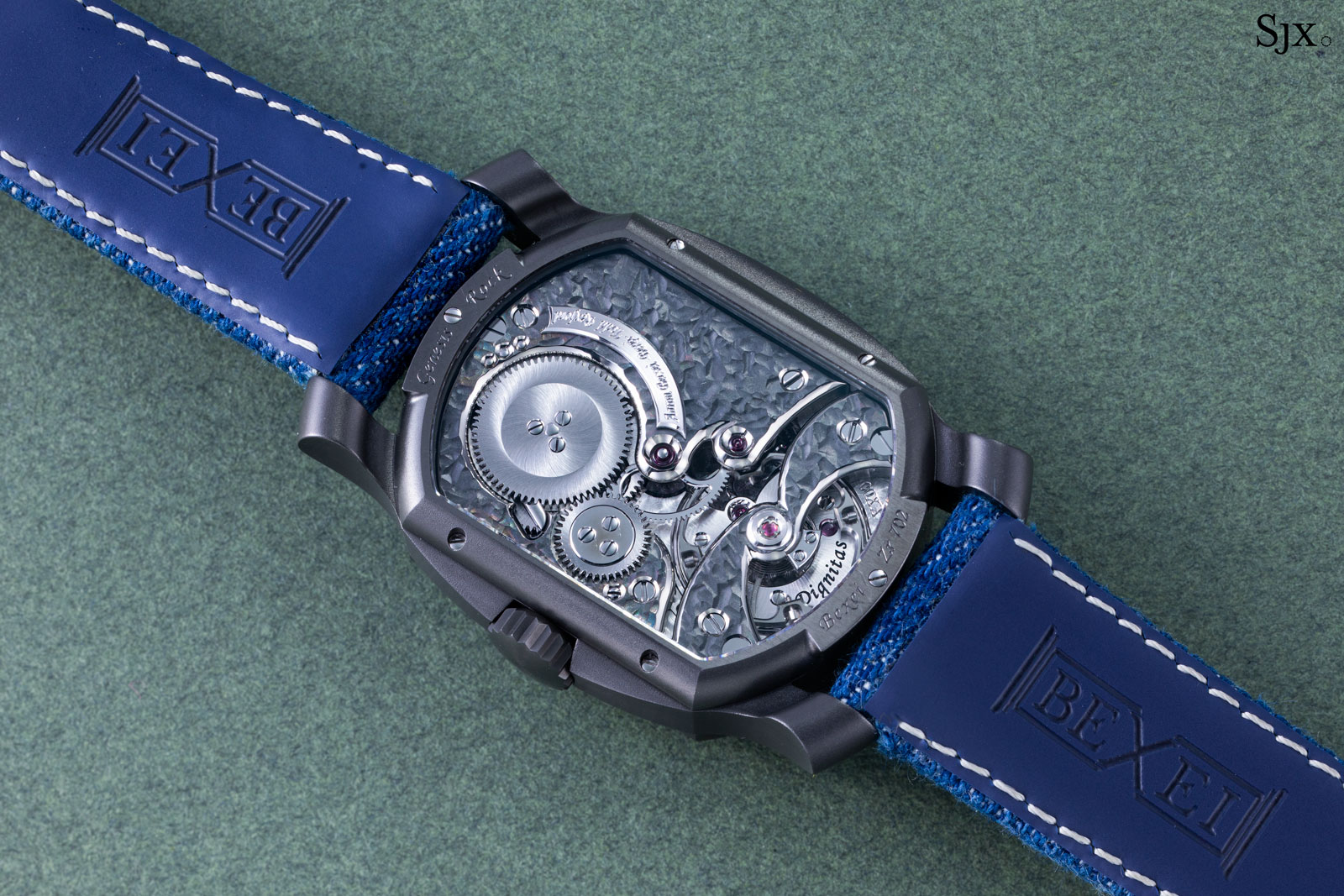
The Bexei x Rexford Dignitas with hammered zirconium bridges
For a veteran of many fairs the number of resurrected independent watch brands – ranging from Leroy to Vulcain to Hautlence – was a highlight as well as a red flag.
All the brands back from the dead are unsurprising, since they have all come back to life to capitalise on unbridled demand. But the recently revived vary in terms of quality. Hautlence, for instance, was dormant for four years or so but is the sister company of Moser, which puts it on sounder ground than most of its peers.
Leroy, on the other hand, was exhibiting the same watches it was offering before the brand was laid to rest temporarily a few years ago. Its showcase felt more like an attempt to sell the watches it could not way back then.
And there are also a handful of brand-new (and fairly new) names, ranging from the impressive to the awful. The latter certainly includes Doppelgänger, which had on show an enormous, ovoid watch with a tourbillon priced north of US$150,000, bringing to mind the boom of the mid 2000s before the Financial Crisis.
These new players are just the beginning, if the current boom continues. Already there was much talk of assorted watchmakers, constructors, and designers who are in the process of setting up their own brands with an eye on launching next year.
As the boom progresses, the quality of new entrants will decline slowly but surely. Collectors will need an ever more discerning eye to pick out the good ones. And as Warren Buffet famously said, it’s only when the tide goes out that you see who is swimming naked.
Back to top.

